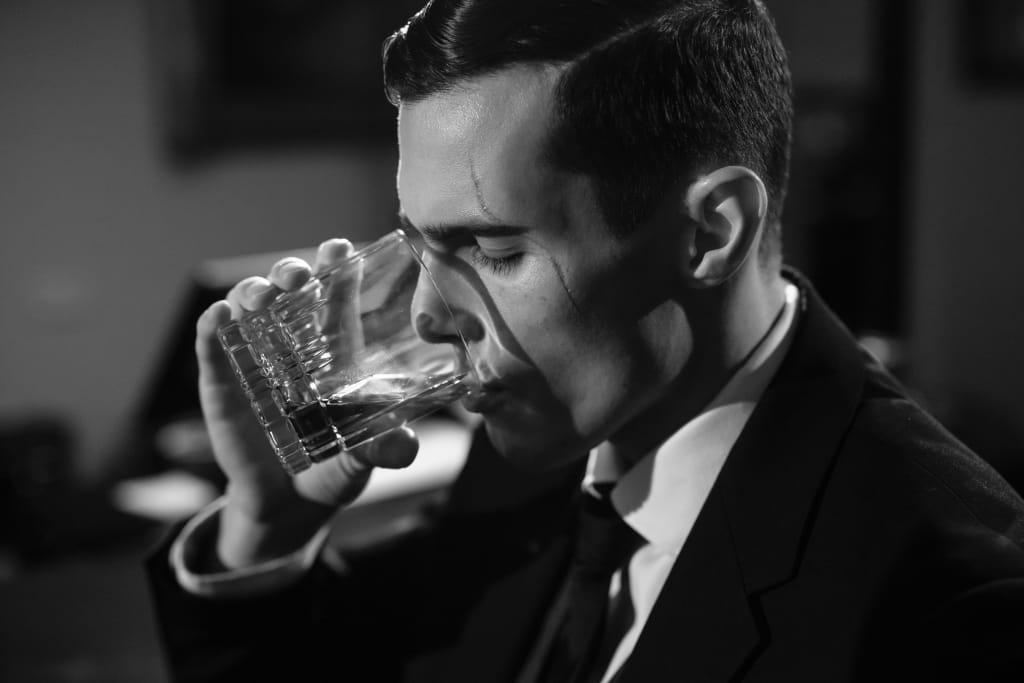Discover 11 Surprising Facts About Al Capone That You Were Unaware Of
Scarface

In the early 1920s, the US government prohibited the sale of alcoholic drinks. Though the demand for liquor remained high, the supply was cut off, giving rise to the era of bootleggers. Al Capone, also known as Alfonse Gabriel, took charge of the Chicago rackets at the young age of 25. He became one of the most notorious cultural figures of the 20th century and his name became synonymous with organized crime. Here are some surprising facts about Al Capone that you may not have known before.
Americans have a fondness for inspiring tales of upward mobility, even if the storyline involves criminal activities like abductions, illegal liquor trading, and murders. Al Capone's life follows a similar pattern, as he began from humble beginnings. Born in 1899 in Brooklyn, New York, Capone was raised in a dilapidated tenement near the naval yards by his Italian-American immigrant parents. The neighborhood was notorious for its availability of alcohol and sex workers, with sailors and soldiers being frequent patrons.
However, Al Capone's upbringing was different from what many would assume. His father was highly educated and came from Naples, and the family was known to be professional and respectable. Al himself was on the right track during his early years, but things changed when he was a teenager. At the age of 14, he began to exhibit delinquent behavior, and he was even expelled from school for hitting a female teacher during a fight. New York City was home to many street gangs at the time, including the notorious Hudson Dusters and Gopher Gang.
The nicknames of gangsters used to be quite impressive, and Al Capone was no exception. He became associated with the notorious Five Points Gang in the city and quickly became skilled at his job. Later on, he joined organized crime through his ties with Johnny Torrio, a powerful boss from Naples. Capone's father also hailed from Naples, making the connection between the two even stronger. His underworld moniker, Scarface, was so fearsome and intimidating that it inspired multiple movies. The origin of this name came from Capone's time as a bouncer in a local establishment called the Harvard Inn, after he was expelled from school.
According to the tale, while working as a bouncer at the Harvard Inn, Al Capone showed interest in a woman named Lena Galluccio. However, she declined his offer for a walk on the beach. Capone persisted and later complemented Lena, which led her brother Frank to confront Capone with a knife. Capone received three cuts on his face, which required 80 stitches to heal. These scars would become the basis for one of the most iconic gangster monikers in history, "Scarface."
Al Capone, also known as Scarface, had a less intimidating nickname among his friends: Snorky. Despite his infamous reputation as a dangerous mob boss, he was called Snorky by his pals because it was gang slang for a well-dressed individual. Capone had a fondness for expensive, imported Italian suits, which made him a sharp dresser in 1920s Chicago. While his friends sometimes referred to him as The Big Fellow, that nickname requires no further explanation.
Al Capone was a man who appreciated the finer things in life, particularly when it came to his wardrobe. He had a penchant for tailored suits, and when he began to amass a fortune, he spared no expense on his attire. It's been reported that Capone would spend up to $500 on a single outfit, which, when adjusted for inflation, equates to roughly $7,000 in today's currency. It's not surprising that someone who valued their clothing that much would take steps to protect it, and himself. To ensure that his expensive suits remained pristine and to safeguard his life, he had his 1928 Cadillac V8 Town Sedan reinforced with armor plating.
Al Capone was known for his love of expensive items, and he spared no expense in making sure that his custom-made suits remained in pristine condition. To protect his valuable wardrobe, Capone went to great lengths to reinforce his 1928 Cadillac V8 Town Sedan with armor plating. With 3,000 pounds of steel plates and bulletproof glass windows, the car was essentially a tank. But that's not all - the car also had a few other unique features, such as rear holes that allowed Capone and his henchmen to shoot back at attackers without exposing themselves to danger. It's no wonder Capone has been dubbed the original "Pimp My Ride" king.
In the tradition of American bosses, Al Capone and his gang enjoyed golfing. However, they didn't just play for sport; they also engaged in heavy drinking, placed outrageous bets, and carried guns in their golf bags. This was because gang violence was prevalent in 1920s Chicago. One day in September 1928, Capone went golfing with some of his associates, including Fred "The Killer" Burke, Jake "Greasy Thumb" Guzik, and "Machine Gun" Jack McGurn. While searching for a club in his bag, Capone mistakenly grabbed his revolver, causing it to fire and injuring him. He was immediately taken to St. Margaret's Hospital, where he used the pseudonym "L. Geary" to avoid attracting attention and to prevent people from finding out how clumsy he was.
Al Capone was known for spending money extravagantly on his lavish lifestyle. He splurged on expensive clothes, jewelry, fancy cars, and gadgets. Despite this, his wealth never seemed to run out. Being a Chicago mob boss involved in several criminal activities such as racketeering, gambling, prostitution, and bootlegging, Capone made a massive fortune. Reports estimate that he earned around $100 million annually in the 1920s, which, when adjusted for inflation to 2020, amounts to over $1.3 billion.
Maintaining control over Chicago's criminal underworld was a matter of taking out anyone who posed a threat to Capone. His ruthlessness was directed towards everyone, from competitors to customers, with no one being spared. This violent behavior led to increased scrutiny, and Capone countered this by bribing law enforcement officials, politicians, judges, and lawyers. He spent a significant portion of his earnings each year on bribes, ensuring that the establishment remained on his side and stayed out of his way.
Al Capone's once sharp mind was ultimately compromised by an untreated case of syphilis that he contracted at the age of 18. His refusal to seek medical attention allowed the disease to progress and have devastating effects on his mental faculties. Reports from the 1940s suggest that Capone's cognitive abilities had deteriorated to the level of a 7-year-old. During his time in prison, he required specialized care and would often lash out at nurses while muttering to himself. By the end of his life, Capone was a mere shadow of his former self.
The Capone family had an incredible story. Al's brother, James Vincenzo Capone, fought in World War I and lost contact with his family. When he returned, he moved to the Midwest and changed his name to Richard Hart, becoming the marshal of Homer, Nebraska. He preferred subterfuge to direct action, often wearing disguises to catch bootleggers in the act. This contrasted with Treasury agents like Eliot Ness, who would storm into the front door of gangsters' hideouts with guns drawn.
Al Capone, notorious for his bootlegging empire, corrupt practices and involvement in murder, also had a philanthropic side. It is unclear if his charitable acts were genuine or simply a public relations move, but he had a reputation as a man of the people. During the Great Depression, he opened several soup kitchens in Chicago and was known to personally help feed the poor. Capone was also famous for being a generous tipper. Additionally, he and his brother Ralph supposedly lobbied for a law requiring milk bottles to bear an expiration date after a relative fell ill from drinking spoiled milk. Capone even invested in dairy, which was partly managed by his brother-in-law, nicknamed "Bottles". Although Capone is not typically associated with milk, his efforts to improve public health and safety through milk bottle labeling are a lesser-known part of his legacy.
Al Capone stood out among his fellow gangsters in 1920s Chicago due to his love of publicity and attention. While other criminals shied away from the spotlight, Capone embraced it, flaunting his illegal activities in flashy suits and jewelry. In fact, he even hired his own press agent, Damon Runyon, to manage his public image during his trial for federal crimes. Despite being beloved by the public and having city officials in his pocket, Capone was eventually caught and convicted of tax evasion in 1931. He was sent to a federal prison in Atlanta, but even from behind bars, he maintained his influence by bribing guards. He was later transferred to Alcatraz in 1934, where his reputation didn't help him with the guards or fellow inmates, who even stabbed him with barber shears. Capone's syphilis began to take its toll, and he was eventually transferred to Terminal Island Prison in California, where he served out the rest of his sentence. He was granted parole in 1939, but his life was plagued by the effects of the disease, which ultimately led to his death in 1947.
Share with us in the comments section below, in your best gangster voice, which of these Al Capone facts surprised you the most.
About the Creator
Bob Oliver
Bob is a versatile writer & communicator passionate about exploring diverse topics & perspectives. I have written for various media outlets. And I believes in using words to inspire positive change. #writing #communication #passion






Comments
There are no comments for this story
Be the first to respond and start the conversation.